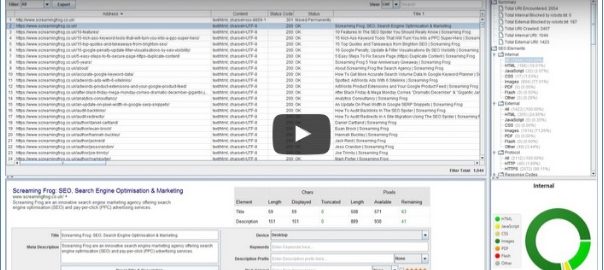— July 3, 2017
Everyone knows that eCommerce is BIG business…
Once upon a time, eCommerce was just Amazon and eBay.
Now, with so many of these make-it-yourself eCommerce sites, the entire SEO for eCommerce is radically changing.
I read somewhere that there are about an estimated 110,000 English language eCommerce sites, in Alexa’s top One Million sites.
Given the competition, how can you ensure that it is YOUR eCommerce site that will rise to the top?
One thing that comforts me is that the eCommerce SEO strategies for most of these sites are dreadful. So there is still hope…
I have made a list of some key eCommerce SEO strategies that can help you have a clear edge over your competitors.
I have broken them down to three key areas…to make it look simpler…
- Keyword Research For Ecommerce Sites.
- On-Page SEO.
- Technical SEO.
Follow these tactics, when constructing or re-building your eCommerce site… and you’ll definitely wind up with something that brings in sales…
What are we waiting for… let’s dive in!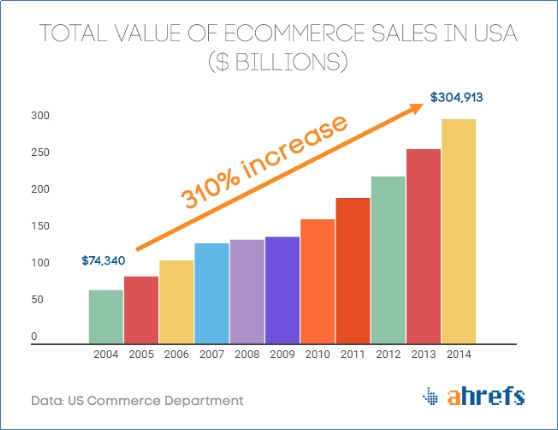
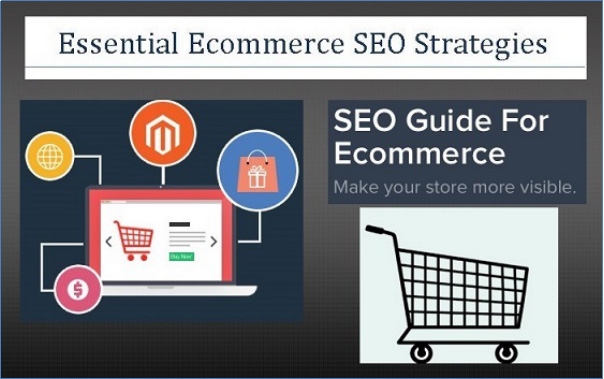
Ecommerce SEO Strategy 1 – Keyword Research For Ecommerce Sites.
Every 60 seconds, around 700,000 Google searches are performed.
Maan… Now, that’s a lot of searches!
So, let’s get down to the starting point …. Keyword research.
The average consumer daily processes about 100,500 digital words.
Phew!
With all this data, how can you be sure that customers find you in the search engines?
To reach your consumers, it is better we start with a targeted keyword list.
In an analysis of 3,000 keywords, it was found that 7% of the total keywords were head terms, and 93% were long tail keywords.
Another bouncer!
Check this comparison between head terms and long tail keywords across six different industries. While the head terms received 11 times more traffic, the average conversion rates for the long-tail keywords were 4.15% higher than the short-tail.
Let’s stop going over figures…
It’s obvious that Google favors informational content over eCommerce sites…
which means that longer precise keywords with the right mix of content marketing
will play an important part for SEO strategies in the future.
Step One – Free Keyword Analysis Tools.
Some time back, I did an extensive research and compiled a few keyword/ SEO tools that I felt were useful for eCommerce sites.
The two easiest tools that come for free are the Google Autosuggest and Google Related Search Suggestions. With the former, all you have to do is to type in your search phrase and Google comes with a list of autosuggests below… With the latter, again you type in your keyword phrase in the box and scroll down for related phrases.
The other good ones are:
- SEMrush is one of THE best SEO and competition analysis tool out there.However, you need some expertise to get used to it. Besides, you only get a 14 DAY FREE TRIAL PERIOD. Just add the domain and simply click over to “Organic Research.” In addition, to keyword search, it just has everything you need to a successful SEO audit.
- Keyword Planner provides you with so many keyword suggestions in such a way that search engine love it.
- Google Trends is a free tool that helps you check whether you are using the right trending keyword. You can identify which of your keyword has a growing trend, and in which regions are your keywords popular, and during which period did they peak.
- In addition, GOOGLE CORRELATE helps you know the topics that people are interested in. And, GOOGLE LOCATION CHANGER, displays SERPs for a particular local area, despite you not living there. Huge help in weighing up first pages in local SEO campaigns.
- Ubersuggest: Type in a headword or a product name into the search bar to get a flood of results.
- Keywordtool.io isanother free tool that generates up to 750+ long-tail keywordsuggestions for each search term. It also provides you with a phenomenal number of ideas / long-tail keyword opportunities, based on a single keyword.
- WordStream, Is a free keyword niche finder, with which finding profitable keywords for any SEO campaign is a breeze with WordStream,
- Keyword Dominator: If you are marketing in the Amazon Seller Network, I would highly recommend checking this tool out. It’s ah-mazing!
- Amazon Suggest: Similar to Google Autosuggest but filled with great product keywords to target.
- Ahrefs Keywords Explorer, useful for finding very high converting keywords.
Ecommerce Strategy 2 – On Page SEO.
Step One – Site Architecture.
If you’ve been looking for an excuse to revamp your eCommerce website, this may be it.
In other words, how you organize your eCommerce site is very crucial. Mainly because, most eCommerce websites have millions of product pages.
The site architecture allows you to map out how the user flows through your website. As the website owner, you want the user to be able to quickly identify key pages and the relationship between the pages.
Here is an example of how your site architecture should look: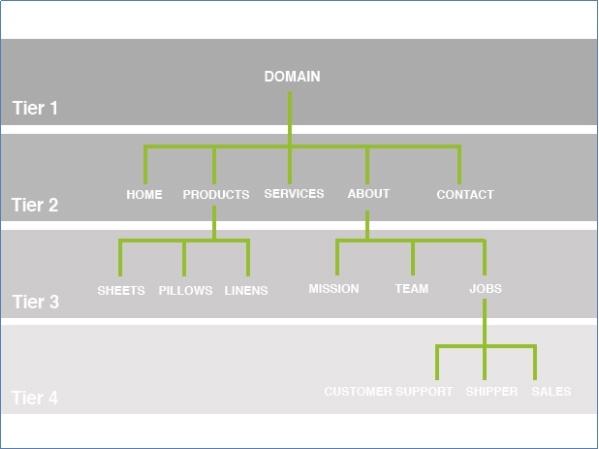
Given below is an example of what your site architecture should NOT look like: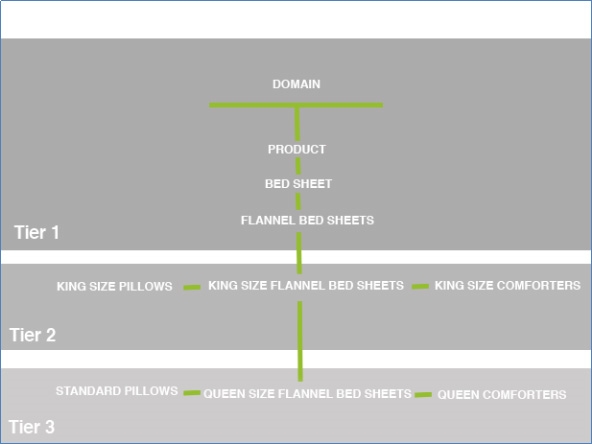
A bad user flow experience with your site architecture can definitely hurt your SEO. You can see from the above site architecture, that the pages are excessively “deep.” The authority of the links is diluted by the time you get to your category and product pages.
If you’re interested in mapping out your site architecture on your own, I suggest Balsamiq or Lucid Chart.
Basically, Lt Should Take the User at the Most Three Clicks to Get Back to Your Homepage.
Step Two – Building your Navigation and Site Structure.
Before doing so, try to mind-map the entire process.
Phase 1) Ask yourself these questions.
1) What search queries do consumers use before they get to your site?
2) What search queries do consumers use once they’re on your site?
3) What pages on your website get the most traffic?
4) What are your top exit pages?
Phase 2) Decide if the drop-down menus are something you’d like to incorporate in your navigation bar.
Make sure to use HTML, if you plan to use drop down menus. Without HTML, search engines will not be able to find your navigation.
Phase 3) Be easy with your links – MOZ recommends 100 links per page max.
Phase 4) Use your short-tail keyword term to name your category pages. Incorporate them into your page title, header, and include it in the top 200-word paragraph.
Phase 5) Add breadcrumbs to your product pages to give users and the search engines.. as it is likely that Google will show your breadcrumbs instead of your URL.
Ecommerce Strategy 3 – Technical SEO.
The Technical SEO is no longer simply about Sitemaps and Meta tags.
if you’ve found your website is lacking in the technical SEO department, you’ll be
surprised by inserting canonical tags and switching up homepage internal links for the right content.
You’ll realize that technical SEO can improve just about any site, eCommerce or not.
Let’s take a quick look into some of them…
Step One – Detecting Existing Problems With Your Site.
The first important aspect is to AUDIT your eCommerceWebsite and identify any problems that need immediate fixing.
I would recommend that you use Screaming Frog to find any SEO errors and site auditing. Simply put, it’s awesome.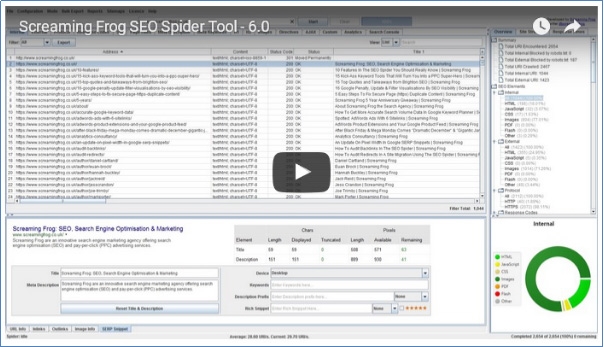
Screaming Frog is free to use and you not only can audit any SEO aspect, but you can also;
- Redirect any 404 pages to the actual content,
- Change all 302 redirects to 301 redirects, and
- Update Meta descriptions, Meta titles and any duplicate content pages.
Screaming Frog literally identifies most of the site’s critical 550 parameters.
It is not limited to identifying duplicate pages, errors, URLs, titles, content, Meta
descriptions, redirects, missing header tags, images, image tags, sitemap errors, and dead links etc.
It can literally crawl your site within minutes and provide useful info on any SEO technicalities.
Step Two – Add Eye Catching Reviews.
Eye catching reviews will go a long way in helping display rich snippets in Google.
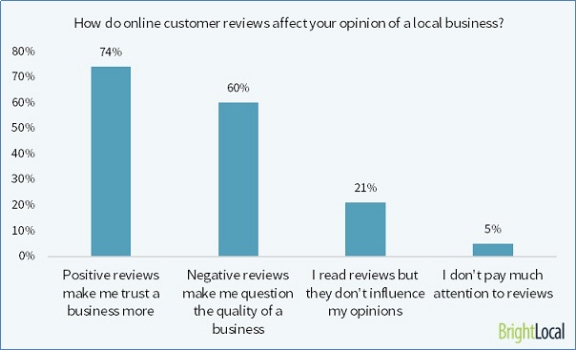
Source: BrightLocal
But then, how do we implement these product reviews?
Step Three – Implement Product Review Schema Markup.
Schema.org is very crucial for online companies as quick answers and rich snippets are now showing 22% of the time in Google search results.
So, make it a point to include schema.org markup to your website. Taking advantage of schema markups will be the new skill to implement for both SEOs and all around marketers alike.
Given below is an example of a rich snippet that has reached the first page with the help of product reviews. But, remember that adding a proper Schema markup will only boost your chances of being picked by Google to be included in the rich snippet box.
That’s all there is to it!
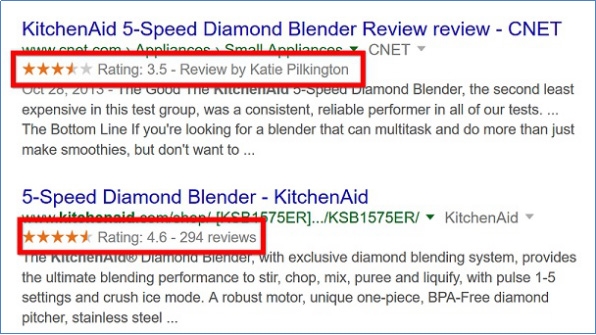
Of course, you can painstakingly try and set up a Schema markup by yourself….but it’s much easier with the Structured Data Markup Helper, a free tool, provided by the Big G!
Given below is the method on how to use this tool to quickly implement Schema markup:
- First, head over to the tool and choose “products” from the list of options.
- Next, find a product page on your site that has reviews and ratings on it. This can be a single reviewer, or as is the case with most ecommerce sites, user reviews.
- Paste the URL of that product page in the URL field and click “Start Tagging.”
- Then highlight the section of the page you want to tag. In this case, we’re going to focus on product reviews and ratings.
- If a single person reviewed your product, choose “Review.” Then highlight the name of the person that reviewed the product, the date of the review etc.
- If your site’s customers reviewed the product, highlight the number or star rating and pick “Aggregate Rating.”
- Make sure to provide as much info as you can. For example, don’t forget to highlight the number of reviews and choose the “count” tag.
- When you are done, choose “Create HTML.”
- You can either copy and paste this new HTML into your page or simply add the new Schema markup to your existing HTML.
Step Four – Use Short, Keyword-rich URLs.
“Remember that short URLs tend to rank higher on Google’s first page than longer URLs.”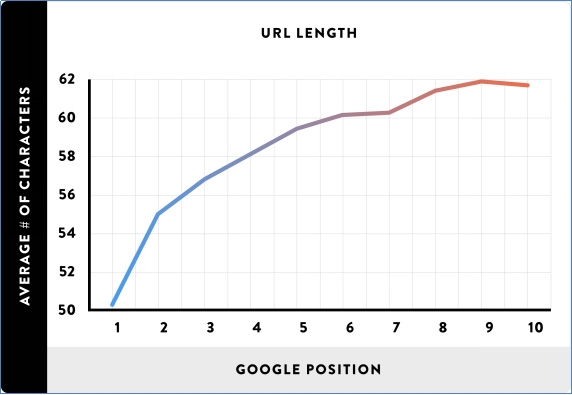
Image Source: Backlinko
If you’re using filters (as most e-commerce sites with 20 products or more on a page do)… you would surely have to pay close attention to your URL parameters.
And, most eCommerce sites have a slightly longer URL… compared with the usual sites.
Obviously, long URLs that stretch out to 50+ characters confuse Google and dilute the impact of the keywords in your URL. [Check this old interview with Matt Cutts]
Given below is a clear example of an unnecessarily long eCommerce product page URL…
Besides, being unusually long, it also contains unfriendly SEO terms like, (“productID.300190600”)… which will destroy a product online.
So, try to include SEO friendly terms in your URL, and also make them keyword rich.
Use a single word head keyword for main category pages, i.e,.… https://site.com/homeappliances
Similarly, follow the process with its sub-categories…
https://site.com/homeappliances/refrigerators/
Now apply the same for product pages with target keyword.
https://site.com/homeappliances/two-door-refrigerators/
Step Five – Unique Product Descriptions.
It is very important that you do not copy manufacturer’s product descriptions
It is a big mistake that most eCommerce websites do.
You could even be penalized for duplicate content.
So come up with that UNIQUE. one of a kind Product Description.
Step Six – Catchy Meta Titles and Descriptions.
It is also important to come up with catchy Meta titles and descriptions for product pages.
That have those unique short-tail keywords.
It is one of the key on-page SEO aspects.
Step Seven – H1 Tags.
Remember to always add one H1 Heading Tag on every page.
It should preferably be the same, if not similar to the Title tag.
While the title tag is displayed in SERPS, the H1 Tag is your on-page title.
Step Eight – Switch To HTTPS.
As eCommerce stores will generally have a number of forms which collect personal details from users…. It is a good practice to make sure that ALL information is encrypted.
So, it is advisable for an eCommerce Store to switch the domain from HTTP to HTTPS.
Prior to converting your HTTP to HTTPS, it is advisable to go over Google’s recommended steps:.
Google has also confirmed that there is a rankings boost for sites with HTTPS settings.
Check out this article from ahrefs.com –
Where they analyzed the HTTPS Settings of about 10,000 domains
And found out that how it affected their SEO strategy.
Brian Dean, further researched and analyzed about ONE Million Search Results,
And discovered that HTTPS settings, and Higher Rankings
on Google’s first page were very interconnected.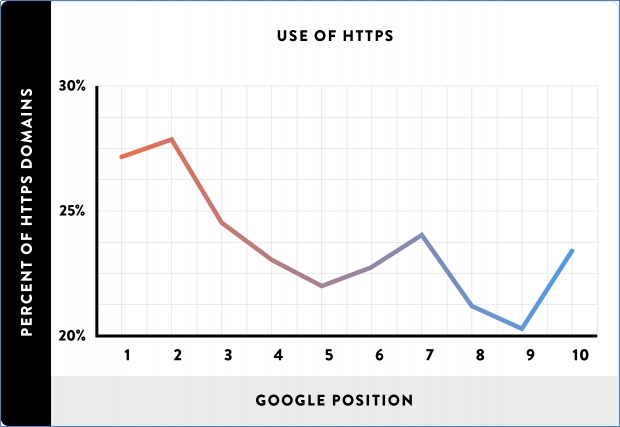
MOZ’s latest search ranking survey further vindicated this claim.
Step Nine – Create a sitemap.
An XML [Extensible Markup Language) sitemap creates a readable format
of your site for search engines.
They organize a list of all the URLs on your website.
If you’re an eCommerce site with lots of pages,
it’s time to get familiar with XML sitemaps.
You can use any of the good free sitemap creators that are available in the net.
Finally, don’t forget to ping the search engines after you’ve created a sitemap.
You can do this by submitting your XML sltemaps to Google Search Console once they are completed.
Step Ten – Website Speed.
Research confirms that nearly 40% of visitors
leave a site that takes more than 3 seconds to load!
Your customers will likely go to a faster website, which could be your competitor!
This is why it’s IMPORTANT for your site to load quickly.
If you need a way to test your website speed,
Use a free tool like Google PageSpeed Insights Tool.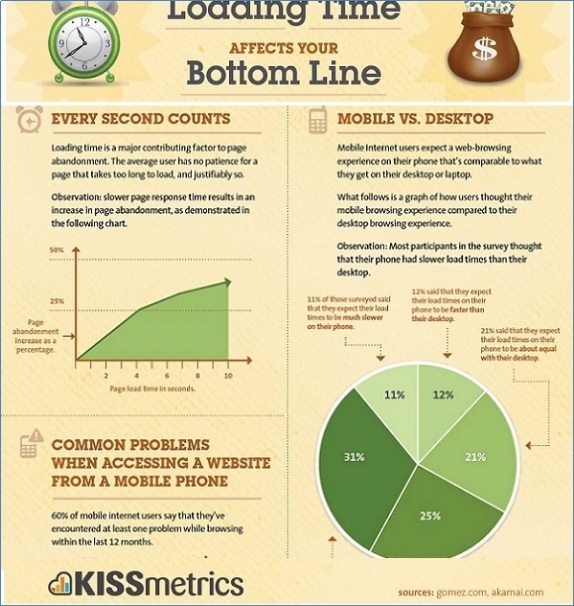
Image Source: KISSMETRICS
Alternately, if your website or blog happens to be loading slowly, it is time you worked on it. You can increase loading speed by following the below tips;
- You can optimize images, and reduce the size of your images (without compromising on quality) by using these FREE tools – TinyPNG and Compressor.
- You can use the FREE Gulpjs Tool to eliminate unnecessary whitespaces from your JavaScript and CSS files.
- You can install the FREE plugin Autoptimize, in case you are using WordPress.
Step Eleven – Optimize for Mobile.
It is no secret that we live in the age of mobile and smartphones… this has had a significant outcome on overall search trends and increase in device availability.
I generally run the Google’s Mobile Friendly Test Tool, to ensure that my site is mobile friendly…so run your site through the below site speed and mobile test tool.

Step Twelve – Accelerated Mobile Pages or AMP.
The increase in mobile usage has had a substantial effect on search trends.
Through 2016, Google has pushed several AMP-related actions for adoption…
and it is fast becoming accepted…
AMP uses data, which is 8 TIMES less than the usual pages, and which is also 4 TIMES faster than regular pages…thereby loading pages faster.
Alternately, you can also self-validate with this
AMP validation post on the Accelerated Mobile Pages Project website itself.
Step Thirteen – Importance of CDN or Content Delivery Networks.
Another area that piqued me was the Content Delivery Networks
It has gradually been growing over the last couple of years.
eCommerce Merchants use it to improve overall conversions
And User Engagement as it helps content load faster.
Similar to AMP, the objective of a CDN is to ensure that web pages load faster, and to also improve SEO.
Step Fourteen – Backlinks Could Lose Out To Content.
And lastly, it has been reported that backlinks would continue to lose out as a ranking signal in the future…as Google will give more emphasis to relevant content.
So, here we are…
Conclusion.
If the SEO strategy is done right, you will not only see an increase in quality traffic, which will inherently lead to more conversions and sales.
If you still feel that there are areas that needs to be checked
Run these TWO tools
(Screaming Frog and SEMrush),
They easily audit your site and identify any SEO technicalities…
You may also want to run through this detailed list of over 200 SEO strategies, by David McSweeney, the blog editor at Ahrefs.
I thought that it was definitely worth a read!
A final piece of advice… SEO is a marathon, not a sprint…so, don’t quit!
If you have any questions, or, if you wish to discuss any other essential Ecommerce SEO strategies, please feel free to leave a message in the comment section below.
Digital & Social Articles on Business 2 Community
(143)
Report Post